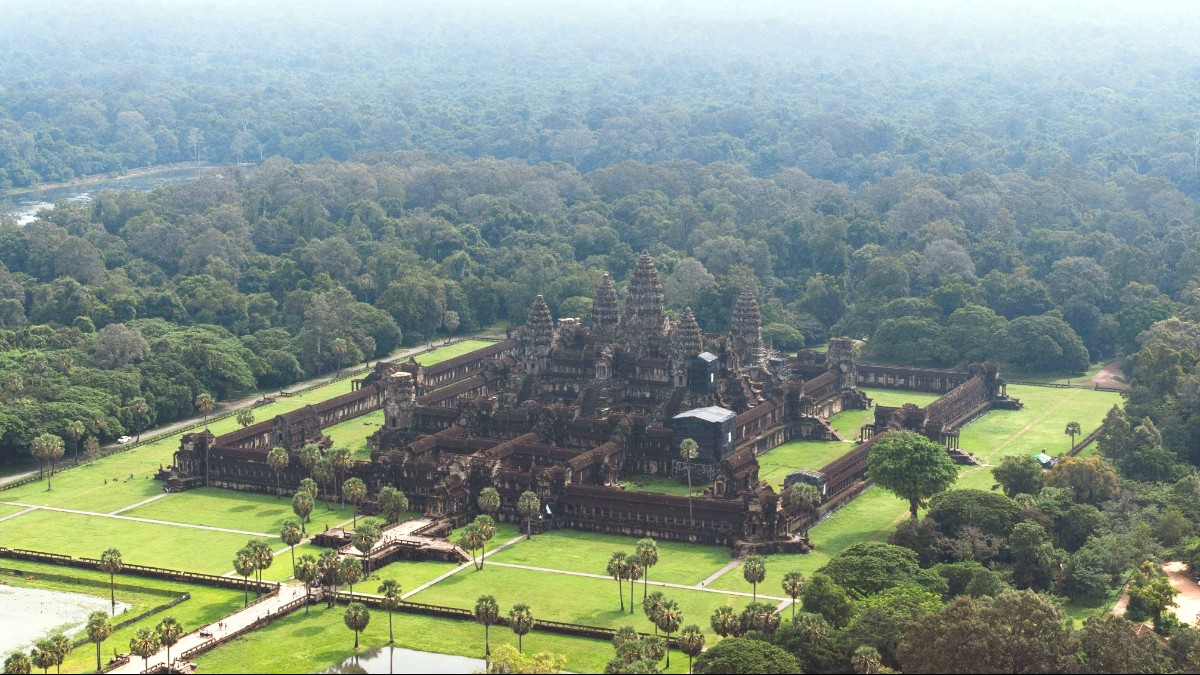
Cambodia
These sites are must-visits, offering deep dives into Khmer history and artistry.
Angkor Wat, Angkor Thom, Bayon Temple, Ta Prohm, Preah Khan, and Banteay Srei represent the pinnacle of Khmer architecture and art.
These strategies enhance your temple exploration.
Includes Angkor Wat, Angkor Thom (Bayon, Baphuon, Phimeanakas, Terrace of the Elephants, Terrace of the Leper King), Ta Prohm, Banteay Kdei, and Srei Srei. This circuit is popular for an one-day or two-day exploration.
Features Preah Khan, Neak Pean, Ta Som, East Mebon, and Pre Rup. These temples offer a different architectural style and often fewer crowds.
(Outside the main park, closer to Siem Reap) Bakong, Lolei, and Preah Ko are earlier temples from the 9th century. They showcase early Khmer architecture and give insight into temple building development.
Siem Reap town features some well-preserved French colonial architecture, especially around the Old Market and riverside areas.
A smaller memorial site near Siem Reap, commemorating victims of the Khmer Rouge regime. It presents a quiet place for reflection on Cambodia's recent history.
Beyond the temples, Siem Reap's surroundings offer natural beauty and unique ecosystems.
(approximately 50 km northeast of Siem Reap) This park features a sacred mountain with a reclining Buddha statue, a beautiful waterfall, and the "River of 1000 Lingas." It requires a separate entry fee.
Explore the unique floating villages, like Kompong Phluk or Chong Kneas, on Southeast Asia's largest freshwater lake. This gives a glimpse into an unique way of life.
(on Tonlé Sap lake) This is a significant bird breeding ground, notably active during the wet season. It needs an organized boat trip.
Angkor Park itself is home to some wildlife, including various bird species and monkeys. Keep an eye out while exploring the temple grounds.
While Angkor Park is mainly archaeological, its extensive forested areas provide a natural setting for the temples, offering a serene environment.
Within Siem Reap town, public gardens line the river, providing green spaces for relaxation and leisurely strolls.
(approximately 120 km northeast of Siem Reap) A remote archaeological site that once served as a capital of the Khmer Empire. It features an unique seven-tiered pyramid temple, Prasat Thom, and numerous other ruins. This site needs a longer day trip.
(approximately 60 km east of Siem Reap) A largely unrestored jungle temple. It resembles Angkor Wat in style but remains covered in vegetation and crumbling stones. It offers an "Indiana Jones"-like exploration experience.
(River of a Thousand Lingas, near Phnom Kulen) A forested area with a riverbed carved with thousands of lingas and Hindu mythological scenes. It needs a short trek to reach.
To make the most of your sightseeing, plan your visits to optimize your experience and avoid common pitfalls.
Siem Reap is mainly known for the magnificent Angkor Archaeological Park, a sprawling complex of ancient temples that served as the heart of the Khmer Empire.
Beyond the temples, the region also offers natural beauty and cultural experiences that enrich your visit.
The ancient temples are the main draw, each with its own story and architectural marvels.
Museums provide context for the ancient sites, while cultural performances offer a glimpse into traditional Khmer arts.
The natural landscapes around Siem Reap offer a contrast to the ancient stone structures.
Support the local community and respect cultural sites.
Planning your visits to the temples and other attractions optimizes your experience and makes for a more comfortable journey.
Visit major temples early morning or late afternoon to avoid peak heat and crowds.
A licensed guide greatly enhances your understanding of the temples' history and symbolism. They also help navigate the vast park efficiently. Book guides via GetYourGuide or locally.
Cambodia's climate is hot and humid. Drink plenty of water, wear light clothing, a hat, and sunscreen. Comfortable walking shoes are a must for exploring the temple grounds.
Many tuk-tuk drivers offer daily rates for touring the Angkor circuits. Agree on a price beforehand for the entire day, including waiting time.
Find Tuk-Tuk ToursCycling within Angkor Archaeological Park is popular due to its flat terrain and paved roads. Bicycle rentals are widely available in Siem Reap town.
Explore Bike ToursJoin organized bus or van tours from your hotel or a tour operator for a structured visit, often including a guide and transport.
Book Organized ToursConsider combining a temple circuit with a sunset view at a less crowded location or an evening cultural show. Plan for early starts and relaxing afternoons.
Discover ActivitiesAlways ask for permission before taking photos of monks or local people. Be mindful of their privacy and avoid disrupting religious ceremonies.
Your choices have an impact.
Temples are sacred sites. Thoughtful conduct helps preserve their sanctity and beauty.
Consider community-based tourism for authentic interactions.
For more authentic experiences, look for tours that visit local villages or support artisan workshops directly, rather than just large souvenir shops.
While the Angkor temples are the main attraction, the Siem Reap region offers additional historical and natural sites worth exploring for a complete experience.
Venture further afield to discover more ancient wonders that are less crowded and provide different perspectives of the Khmer Empire.
Gain insight into Cambodian daily life and support traditional arts.
A few days are usually enough for the main temples, but a longer stay allows for exploration.
Tailor your itinerary based on your interests and pace.
Be aware of the tropical climate when planning your sightseeing.
Always check the forecast and pack accordingly.
The ancient sites may present challenges for visitors with mobility considerations.
Consider a private tour for customized accessibility needs.
Covered shoulders and knees are required inside temple enclosures.
Do not climb on fragile structures or restricted areas.
Observe all signs regarding restricted access or respectful conduct.